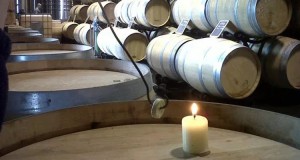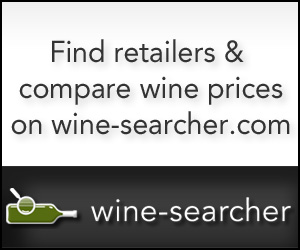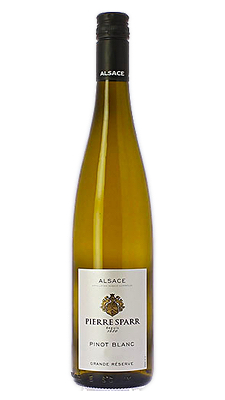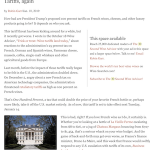“Should I look for a wine with no sulfites? Sulfites give me a headache!”
“We went to France and drank all the wine and never had a hangover or headache. Is that because our wines have sulfites and theirs don’t?”
Explore Wine-Searcher
Wine-Searcher.com makes it easy to find the wines you love, compare prices, find bargains, and locate vendors. Visit Wine-Searcher now to discover its many features, including its popular Top 10 Best Value Wines.
The answers to both of these questions are similar: No! Sulfites in wine shouldn’t give you a headache, and the wines made in Europe and around the world have the same sulfites as wines made in the U.S. Sulfites don’t hurt the wine, and it’s not likely that sulfites will hurt you.
I probably shouldn’t be surprised, but I am, a little, that these same questions persist almost 30 years after the U.S. began requiring a strict warning about sulfites on wine bottles; and more than 20 years since I first wrote about this issue in 1999.
I’ve gone over this frequently asked question again from time to time, but not for quite a while, so let’s review: The simple fact is that all wines contain sulfites. Sulfites are created naturally as a byproduct of fermentation in the wine-making process, and wine makers have put additional sulfites in wine for thousands of years because it is an effective natural preservative.
Here’s the problem: A small percentage of people have a dangerous and potentially fatal allergy to sulfites. Sulfite-sensitive individuals who have survived into adulthood, like people with peanut allergies, know what they must avoid, and that list that includes wine, fruit juice, sausages, salad bars and many other foodstuffs that routinely use sulfiting in production.
Although the threat is small, the U.S. Food and Drug Administration (FDA) has required since 1987 that all foodstuffs containing more than 10 parts per million of sulfites – which includes virtually all wines – must bear a warning label. What’s the upper limit? Wines made in the U.S. may contain as much as 350 parts per million, an extreme level that you’ll rarely see in commercial wines.
Some processed foods, in contrast, may contain up to 6,000 parts per million, about 17 times as much as the most heavily sulfited wine. This might make us wonder why wine was subjected to such a comparatively stringent standard, but it’s a number we have to live with.
As a matter of fact, the U.S. Food and Drug Administration (FDA) list sulfites as “generally recognized as safe” (GRAS) as a food additives.
If you get a headache or a stuffy nose after drinking wine, you may be allergic to something – very likely the histamines in some red wines, or in the case of hangovers, simple over-indulgence. But it’s not the sulfites.
So why do so many travelers (me, too!) report being able to enjoy a little harmless over-indulgence on vacation without the recriminations that would surely ensue at home? My guess, frankly, is that it’s mostly psychological. We’re traveling, we’re relaxed, we’re having a great time, and we shrug off minor irritations that would seem more bothersome on a working day.
Whatever the explanation of this happy consequence, I can say one thing with certainty: It doesn’t have anything to do with sulfites in the wine. The only difference between the wines we drink while traveling and the wines we enjoy at home is the warning label, and warning labels create the unfortunate impression that where there’s a warning, there must be something dangerous afoot.
Let’s leave it at this: If wine gives you a headache and you’re worried, check in with your family physician. Don’t deny yourself the joy of wine on the basis of a self-diagnosed condition. As the sages have said, “the person who treats himself has a fool for a physician.”
Relax, and enjoy something like today’s featured wine, an excellent Alsace Pinot Blanc from Pierre Sparr. You’ll find my tasting report below.
Today’s Sponsor:
Explore Wine-Searcher
Wine-Searcher.com is the place to go online if you want to find where to buy a particular wine that interests you. What’s more, Wine-Searcher.com offers so much more. It’s well worth a visit just to discover its many features, including its popular list of the world’s Top 10 Best Value Wines.
Today’s Tasting Report
Pierre Sparr 2016 Grande Réserve Alsace Pinot Blanc ($16.99)
Sparr Alsace Pinot Blanc shows a clear, pale gold color in the glass. Its delicious aromas offer up a tingling mix of lemon and lime and lemon zest, with a faint jolt of that odd but intriguing mineral scent that’s often called “petrol” in Riesling. Bright citric zest segues over to the palate in a medium-bodied un-oaked flavor with crisp acidity on the tongue that masks a touch of fresh-fruit sweetness. Stony minerality rises up to play in harmony with lemon zest in a long finish. An intriguing, complex white wine that’s good with food and a real value at its mid-teens price. Modersate 12.5% alcohol doesn’t get in the way of the flavor. U.S. importer: Wilson Daniels LLC, St. Helena, Calif. (Feb. 20, 2021)
FOOD MATCH: The back label shows five tiny icons that cutely (but accurately) suggest food pairings: Fish, something on a fork, lobster, chicken, and something on a plate. Okay, that’s not too helpful. Fish, seafood, and chicken for sure, and for a plant-based option, it was fantastic with my roasted fennel and roasted onion risotto.
WHEN TO DRINK: Pinot Blanc isn’t generally considered a wine for aging, but this one is a delight right now, five years after the vintage, with two more recent vintages already in the market. Its good body, structure, and acid balance suggest that it shouldn’t go around the bend if you keep it under good cellar conditions for three to five more years.
VALUE:
As stated, it’s a good value in the middle teens, at Wine-Searcher.com’s $15 average U.S. retail or up to my local $17 price and even a few dollars beyond.
WEB LINK:
Here’s a fact sheet from importer Wilson Daniels.
Find more information on this producer’s page in English; it also offers the wine for sale within France at 8,25€, with additional charges for taxes and shipping to other countries.
FIND THIS WINE ONLINE:
Locate vendors and compare prices for Pierre Sparr Grande Réserve Alsace Pinot Blanc on Wine-Searcher.com.
Learn about Alsace and find links to dozens of Alsatian wines at this Wine-Searcher link.
Use this Wine-Searcher link to learn more about Pinot Blanc and search a broad selection of Pinot Blanc wines.
THIS MONTH’S WINE FOCUS
Join our Wine Focus conversation for February 2020, Wine 102, The Wines of Chardonnay, in our WineLovers Discussion Group.
More affordable wines
Want tips to still more good, inexpensive wines? Here are Wine-Searcher links to vendors and prices for a bunch more wines for $10 or less that I’ve told you about during the past year or two. Please tell us about your favorites!
- La Vieille Ferme Vin de France Rosé ($8.99)
- La Fiera Montepulciano d’Abruzzo ($8.99)
- Laroque Cité de Carcassonne Cabernet Franc ($9.99)
- Domaine de Pouy 2016 Côtes de Gascogne ($7.99)
- Alamos Mendoza Malbec ($9.99)
- Caposaldo Chianti ($8.99)
- d’Arenberg McLaren Vale “The Stump Jump” ($9.99)
Sponsor the Wine Advisor.
We appreciate your support
Support The 30 Second Wine Advisor and help us pay the rent while reaching 25,000 dedicated readers with your sponsorship message in this space, at the top of this E-letter, and on our social media. If you’re an established business in wine, food, and similar ventures, there’s no better way to focus your message toward an audience that comes here for just those topics. See our Sponsorship Page, or email Robin Garr for more information.
Wine Forum and Social Media
If you have questions, comments or ideas to share about today’s article or wine in general, you’re always welcome to drop by our online WineLovers Discussion Group, the Internet’s first and most civil online community.
Discussions are open for public viewing, but you must register to post. If you’re a Facebook user, you can join our forum with a single click! All you need to do is visit the forum and click “Social Login” at upper right.
We’d also be delighted to have you visit and “Like” our WineLovers Facebook Page. This way you can get Facebook notifications when there’s a new The 30 Second Wine Advisor issue or a topic of particular interest on the WineLovers Discussion Group (WLDG).








